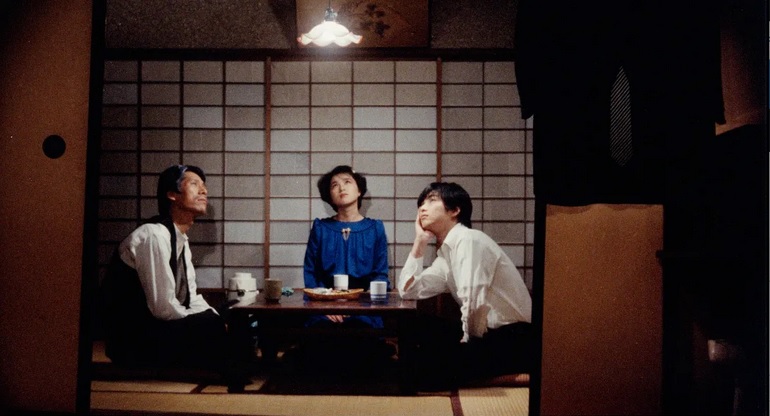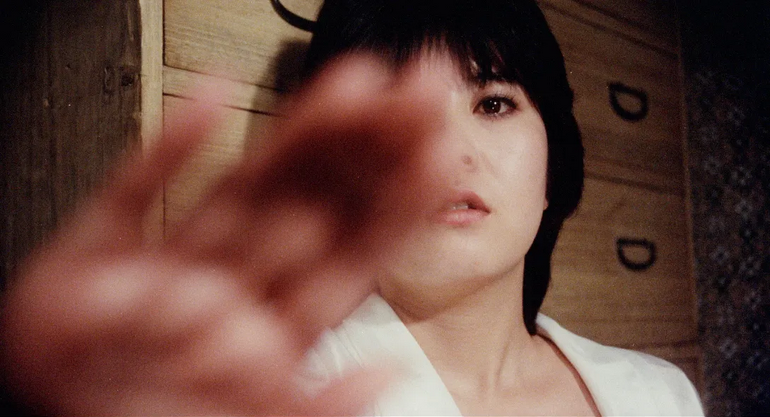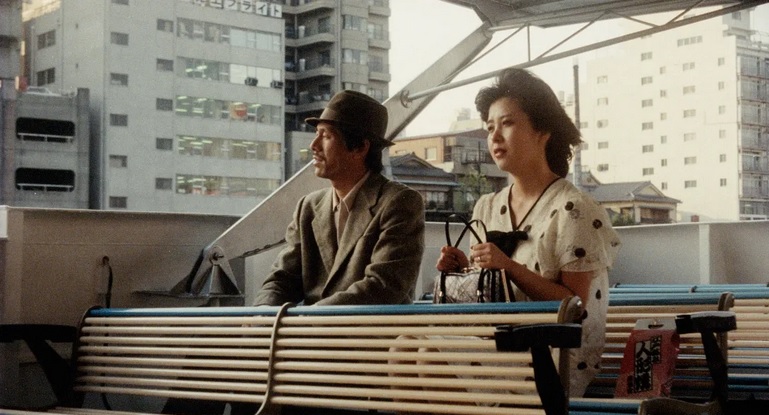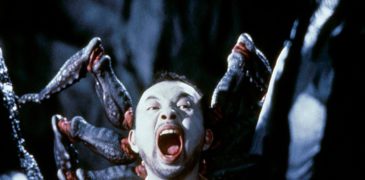
Let me tell you what my father told me: “Marriage will not give you instant happiness. It’s wrong to assume that marriage will bring nothing but happiness. Don’t wait for happiness to come to you, you must create your own happiness. Marriage does not mean happiness.”
I think it is fitting to begin this review with a paraphrase of a popular meme: “I don’t always review pink films, but when I do, they are Shintoho productions.” Indeed, adult movies made in Japan are not my cup of tea, but regardless of the x-rated content, these films constitute an integral part of the history of Japanese cinema. Therefore, I realized I can’t be a prisoner of my own presuppositions indefinitely; so, after having received Pink Films Vol. 3 & 4 from Third Windows Films, I decided to give Abnormal Family: Older Brother’s Bride (1984) a chance.
This particular motion picture was the directorial debut of none other than Masayuki Suo. In 1996, he went on to direct the extremely successful Shall We Dance? comedy drama, but he also churned out such memorable flicks as Sumo Do, Sumo Don’t (1992), I Just Didn’t Do It (2006), and Lady Maiko (2014). You would think that an aspiring young director could not have a worse debut opportunity, yet in fact, the pink industry of the 1970s and the 1980s was a training ground for many newcomers who later moved on to serious cinema.

Masayuki Suo’s Abnormal Family paradoxically does not feel like a scandalous feature cooked up just for the fans of flashy content. Undeniably, we get steamy scenes every 10 minutes or so, but they rather feel like an obligation to accomodate studio demands. In view of stringent censorship rules back in the day, pink filmmakers did not have a lot of leeway to show sex scenes in full glory, just as they are avaialble on modern, digital releases. As a result, we get to see very softcore, conservative sequences which serve as transfer points within an important story that is being told.
What is the story of Abnormal Family? The director cleverly presents the social degradation of Japanese family unit. Yuriko (Kaoru Kaze) is a bride who moves in to live with her husband’s family, the Mamiyas. The head of the family, Shukichi (the magnificent Ren Osugi), is a widower who longs for his wife; Kazuo (Kei Shuto) is a teenager who becomes increasingly frustrated because of his sexual drive; the sister, Akiko (Miki Yamaji), suffers from existential crisis; and Koichi (Shiro Shimomoto), Yuriko’s husband, engages in sexual acts only due to psychological attachment he harbours for his mother.

Undeniably, the Mamiya household is a place of deeply abnormal people, but they are not monsters by any means. Each member of the family suffers from a personal trauma and tries to find a remedy for his/hers problems. The technical side of the film is basically a tongue-in-cheek parody of Yasujiro Ozu’s style of visual storytelling. From famous camera angles through conventional movements right down to monotonous enunciation of dialogue, Abnormal Family functions as a spiritual companion piece to Late Spring (1949), Tokyo Story (1953), and An Autumn Afternoon (1962). The only difference is that it contains adult themes, which enhance the tragic fate of the main heroine and the innocent Shukichi Mamiya at the very end of the story.
All things considered, Masayuki Suo managed to craft a very Freudian, yet touching movie that can be enjoyed even by non-pink viewers. Abnormal Family: Older Brother’s Bride is available in dual format Blu-ray from Third Window Films [Pink Films Vol. 3 & 4]. The remastered version also includes an additional film Blue Film Woman (1969) and a video essay by film historian Jasper Sharp.

More From Third Window Films:
Shinya Tsukamoto’s Gemini (1999) Film Review: Fraternal Love… and Death
As someone whose first introduction to the legendary Shinya Tsukamoto was through his off-beat, disturbed acting roles in “J-Horror” cult classics such as Ichi the Killer and Marebito, I was…
One Cut of the Dead Spin-off: In Hollywood (2019) Film Review
In 2017, a little movie from Japan called One Cut of the Dead arrived on the scene and took everyone by surprise. Being a micro-budget movie that was only made…
Interview with Toshiaki Toyoda – The Underground King of Japanese Cult Cinema
When considering currently acclaimed Japanese filmmakers there are several names that can readily spring to mind. From the exhaustively prolific creations of Takashi Miike to the bombastic and arresting works…
Hiruko the Goblin (1991) Film Review – You Ever Dance with Goblins in the Pale Moonlight?
“Strings of gold sway gently in the wind, They play a sweet and gentle melody, At night I walk in the pale moonlight, Together with a dream, A secret dream..”…
Electric Dragon 80.000 V (2001) Film Review – New Kids on the Shock
Electric Dragon 80.000V is a 2001 experimental sci-fi fantasy, written and directed by the legendary Gakuryû Ishii (previously known as Sogo Ishii). Most notable for films such as Crazy Thunder…
Violence Voyager (2018) Film Review: A Unique Vision of Madness From UJICHA
Japanese artistUjicha has been garnering a cult following, and even before watching this movie, I was aware of the name through buzz coming from the film fests. However, I had…
Oliver Ebisuno is a guy who likes watching (and reviewing) Asian movies. I have my own blog, Watching Asia Film Reviews, and I’m also submitting articles as well as editorials to MyDramaList, Kayo Kyoku Plus, and Asian Film Fans.





